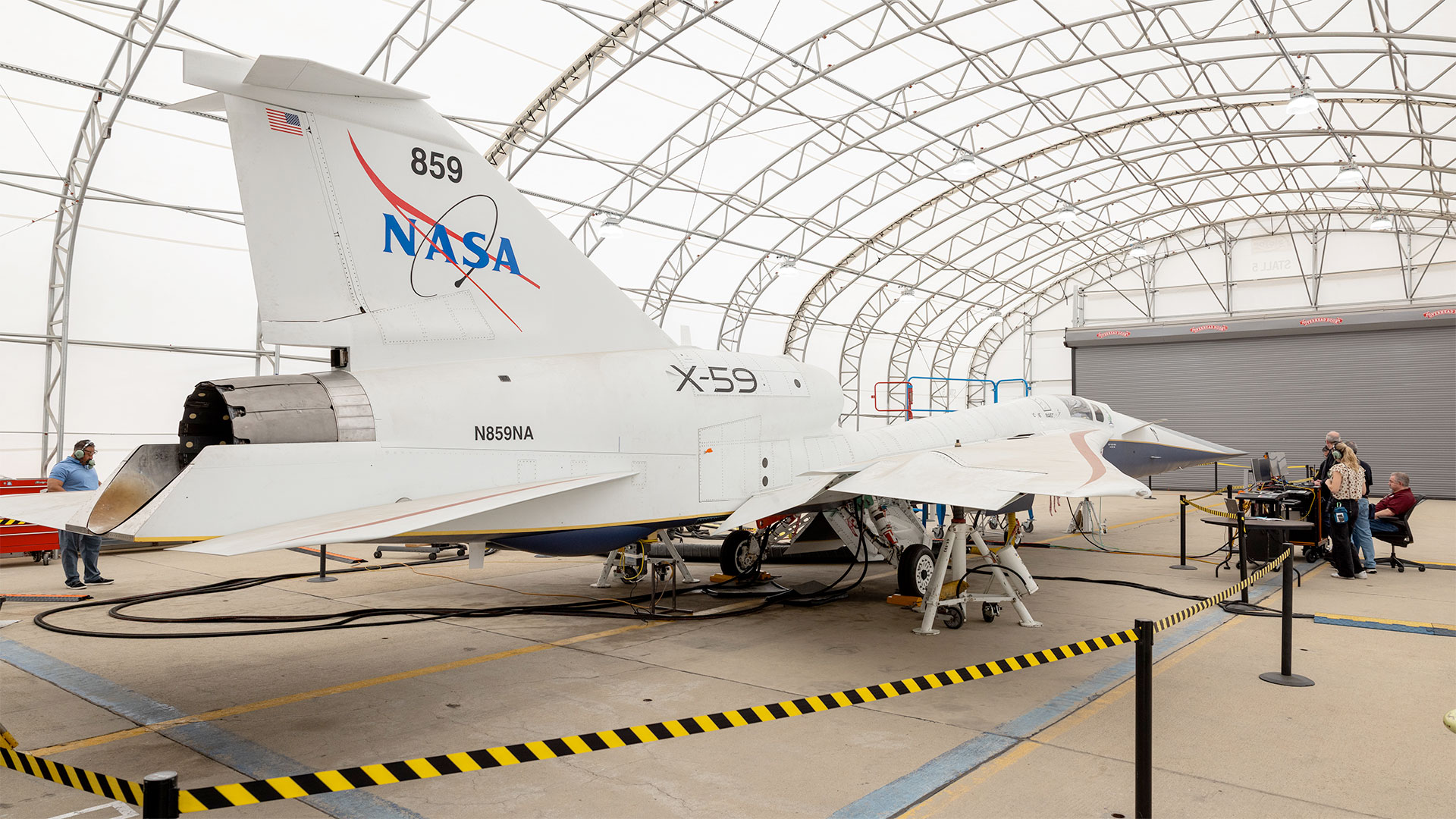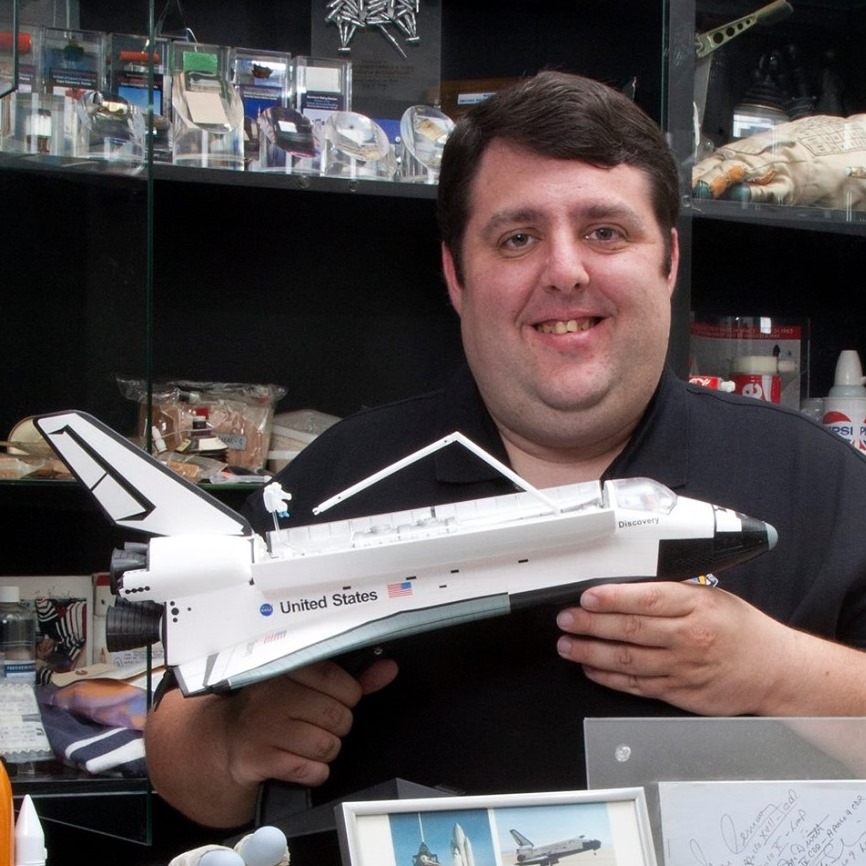NASA's X-59 jet takes 'flight' without leaving the ground | Space photo of the day for May 20, 2025
NASA's X-59 aircraft was put through its paces for cruising high above the California – all without ever leaving the hangar.

What is it?
NASA's X-59 quiet supersonic research aircraft was developed by Lockheed Martin Skunk Works for the space agency's Low-Boom Flight Demonstrator project. Through the use of a long, narrow airframe and canards, the X-59 is able to reduce the noise that reaches the ground from sonic booms generated as the aircraft crosses the speed of sound.
The X-59's cockpit, ejection seat and canopy come from a T-38 "Falon" training jet and the landing gear from an F-16 "Falcon" fighter jet. The research aircraft (X-plane) is 100 feet long (30.4 meters) and has a 29.5-foot (9-meter) wingspan.
Powered by a General Electric F-414 engine, the X-59 is projected to reach a maximum speed of Mach 1.5 or 990 mph (1,590 km/h), and cruise at Mach 1.42 or 940 mph (1,510 km/h) at 55,000 feet (16,800 meters).
Where is it?
Though the X-59 thought it was high above the ground during the simulation tests, it was actually parked at Lockheed Martin's Skunk Works facility in Palmdale, California.
Why is it amazing?
"The idea behind these tests is to command the airplane's subsystems and flight computer to function as if it is flying," said Yohan Lin, the X-59's lead avionics engineer at NASA's Armstrong Flight Research Center in Edwards, California, in an interview with NASA.
During the testing, engineers turned on most of the aircraft's systems but left the engine off. The flight computer still had control over the X-59's control surfaces, responding to inputs that simulated changes in altitude, speed, temperature or the health of its various systems.
"These were simple maneuvers, nothing too crazy," Lin said. "We would then inject failures into the airplane to see how it would respond. Would the system compensate for the failure? Was the pilot able to recover?"
Historically, this work is known as "iron bird" testing, named for a simple metal frame on which representations of the aircraft's subsystems are installed, connected and checked out. Since the X-59 is a one-of-a-kind, officials decided it was better and less expensive to use the aircraft itself.
As such, the series of exercises was dubbed "aluminum bird" testing, since that's the primary metal comprising the X-59.
Want to learn more?
You can read about the X-59's earlier tests, including a "cruise control" trial and electromagnetic interference testing on the ground. You can also see photos from its afterburner tests.
Get the Space.com Newsletter
Breaking space news, the latest updates on rocket launches, skywatching events and more!
Join our Space Forums to keep talking space on the latest missions, night sky and more! And if you have a news tip, correction or comment, let us know at: community@space.com.

Robert Pearlman is a space historian, journalist and the founder and editor of collectSPACE.com, a daily news publication and community devoted to space history with a particular focus on how and where space exploration intersects with pop culture. Pearlman is also a contributing writer for Space.com and co-author of "Space Stations: The Art, Science, and Reality of Working in Space” published by Smithsonian Books in 2018.In 2009, he was inducted into the U.S. Space Camp Hall of Fame in Huntsville, Alabama. In 2021, he was honored by the American Astronautical Society with the Ordway Award for Sustained Excellence in Spaceflight History. In 2023, the National Space Club Florida Committee recognized Pearlman with the Kolcum News and Communications Award for excellence in telling the space story along the Space Coast and throughout the world.
You must confirm your public display name before commenting
Please logout and then login again, you will then be prompted to enter your display name.
